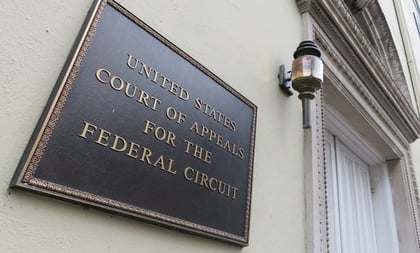A federal appeals court panel today issued a 2-1 ruling that could cost some health insurers billions of dollars in Affordable Care Act subsidy program payments, and could push all federal vendors to determine whether the payment arrangements they have with the federal government are actually contracts.
A three-judge panel at the U.S. Court of Appeals for the Federal Circuit issued the ruling on Moda Health Plan Inc. v. the United States (Case Number 2017-1994). The panel also issued a related ruling, on Land of Lincoln Mutual Health Insurance Company v. United States, that echoes the effects of the Moda Health ruling.
Moda Health, Land of Lincoln Mutual and other health insurers have been suing the federal government in an effort to collect billions of dollars that were offered to them through the Affordable Care Act risk corridors health insurance subsidy program. Congress has refused to appropriate the cash to make up for a program funding shortfall.
The U.S. Court of Federal Claims ruled in favor of Moda Health in February 2017.
Chief Judge Sharon Prost and Circuit Judge Kimberly W. Moore held that, even though insurers had a written agreement with HHS, the agreement was not a contract.
(Related: Judge Backs Health Insurer in ACA Payment Suit)
“The overall scheme of the risk corridors program lacks the trappings of a contractual arrangement,” Prost writes in an opinion for the majority.
Circuit Judge Pauline Newman blasted the majority’s ruling.
“The government’s ability to benefit from participation of private enterprise depends on the government’s reputation as a fair partner,” Newman writes. “By holding that the government can avoid its obligations after they have been incurred, by declining to appropriate funds to pay the bill and by dismissing the availability of judicial recourse, this court undermines the reliability of dealings with the government.”
Prost and Moore were appointed to their posts by former President George W. Bush. Newman was appointed by former President Ronald Reagan.
Representatives from Moda Health and the other parties involved were not immediately available comment. Moda Health could ask all Federal Circuit appeals court judges to rehear the case together, “en banc.” The company could also file an appeal with the U.S. Supreme Court.
America’s Health Insurance Plans, a group that represents health insurers, said in a statement that the courts should stand up for health insurers’ ability to collect the risk corridors program payments.
A document that includes the new ruling on the Moda Health case, and the dissent, is available here.
ACA Risk Corridors Program Basics
In 2009 and most of 2010, while Barack Obama was president, Democrats were in charge of both the House and the Senate. They created the two-law package now known as the Affordable Care Act.
One part of the ACA package imposed new underwriting and benefits rules on issuers of major medical insurance. Most of the new rules took effect in January 2014.
Another part of the ACA created the ACA public exchange system. The exchange system, which provides a web-based supermarket for health insurance, also came to life in January 2014.
The ACA risk corridors program was supposed to use cash from health insurers that did well in the ACA public exchange program in 2014, 2015 and 2016 to help exchange plan issuers that did poorly during those years, to buffer the issuers against exchange startup problems.
The ACA risk corridors program was based on a somewhat different risk corridors program that serves insurers in the Medicare Part D prescription drug plan market.









 June 14, 2018 at 12:23 PM
June 14, 2018 at 12:23 PM











